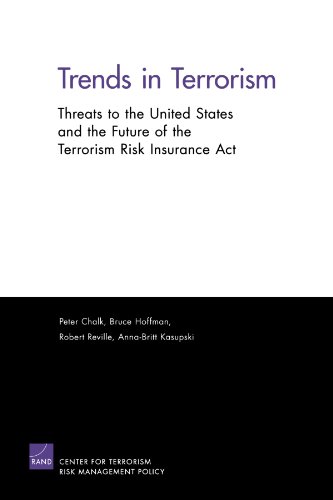

Most ebook files are in PDF format, so you can easily read them using various software such as Foxit Reader or directly on the Google Chrome browser.
Some ebook files are released by publishers in other formats such as .awz, .mobi, .epub, .fb2, etc. You may need to install specific software to read these formats on mobile/PC, such as Calibre.
Please read the tutorial at this link: https://ebookbell.com/faq
We offer FREE conversion to the popular formats you request; however, this may take some time. Therefore, right after payment, please email us, and we will try to provide the service as quickly as possible.
For some exceptional file formats or broken links (if any), please refrain from opening any disputes. Instead, email us first, and we will try to assist within a maximum of 6 hours.
EbookBell Team

5.0
70 reviews 
ISBN 10: 0833038222
ISBN 13: 9780833038227
Author: Peter Chalk
The Terrorism Risk Insurance Act (TRIA) requires insurers to offer commercial insurance that will pay on claims that occur from a terrorist attack, and for losses on the scale of 9/11, TRIA provides a "backstop" in the form of free reinsurance. The authors describe the evolving terrorist threat with the goal of comparing the underlying risk of attack to the architecture of financial protection that has been facilitated by TRIA.
The RAND Center for Terrorism Risk Management Policy (CTRMP)
Center for Terrorism Risk Management Policy Advisory Board
Preface
Summary
Acknowledgments
Introduction
Background
Objective
Organization of This Book
The Architecture of TRIA and an Overview of Terrorism Insurance Since 9/11
Al Qaeda and Imported Terrorist Threats to the United States Post-9/11
What Is the Context for the Evolving Threat?
Given This Context, What Does It Suggest for the Nature of Future Attacks?
A Continuing Interest in Hard Targets, but an Increased Focus on Soft, Civilian-Centric Venues
An Ongoing Emphasis on Economic Attacks
Continued Reliance on Suicide Strikes
A Desire to Use CBRN Weapons, but Little Ability to Execute Large-Scale Unconventional Attacks
Homegrown Terrorist Threats to the United States
What Is the Context for the Evolving Threat?
Given This Context, What Does It Suggest for the Nature of Future Attacks?
Anarchism
The Far Right
Radical Environmentalism
Implications for Public Policy on Insurance
Conclusions
Key Lessons Learned
Conventional Attacks by Foreign Terrorists Against Commercial Targets Remain a Significant Risk in the United States
Several Trends Have Converged to Shift Risks from the Public Sector Toward Private-Sector Assets Typically Covered by Insurance
TRIA Has Significant Gaps and Is Not Robust to an Evolving Threat
TRIA Does Not Provide Adequate Financial Protection, Particularly in the Face of Economically Motivated Attacks
Policy Implications
TRIA's Sunset, Without Additional Congressional Action, Will Both Slow Recovery After a Future Attack and Magnify the Economic Consequences of an Attack, at Least in the Short Run
A Long-Term Solution to Providing Terrorism Insurance in the United States Must Go Beyond the TRIA Framework
The Role of Insurance in Protecting Critical Infrastructure Needs to Be Examined
The Ability of Insurance to Prompt Increased Security in the Private Sector Is Promising but Requires Further Research
Given the Dynamic Nature of the Terrorist Threat, TRIA or Its Replacement Should Be Designed to Be More Robust to Changes in the Underlying Risk
Bibliography
trends in terrorism
current trends in terrorism
emerging trends in terrorism
global trends in terrorism
recent trends in terrorism
new trends in terrorism
Tags: Peter Chalk, Trends, Terrorism, Threats, United States, Future, Terrorism Risk, Insurance Act